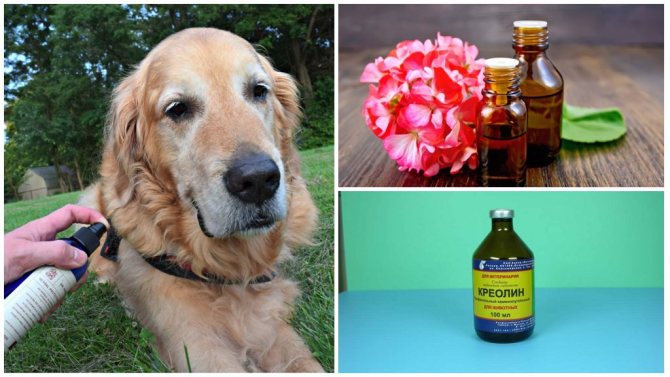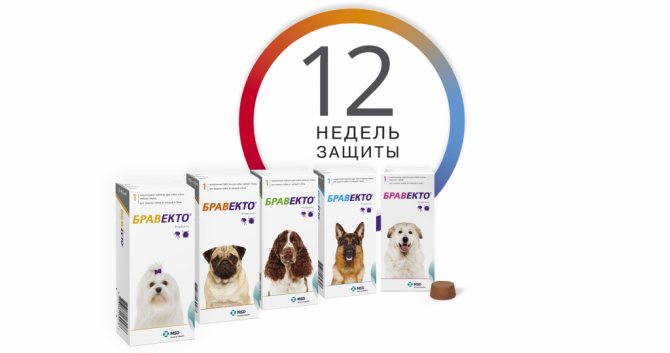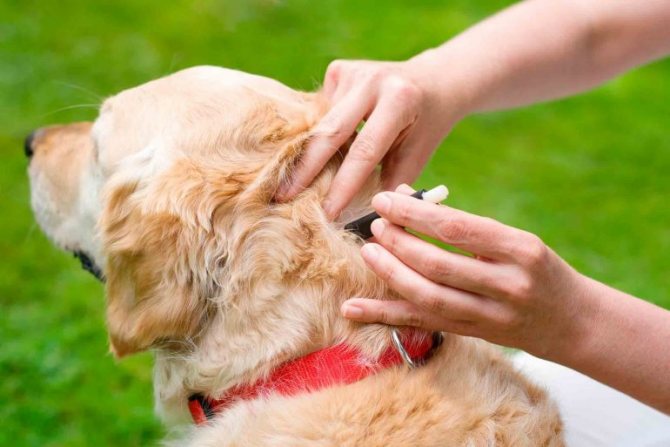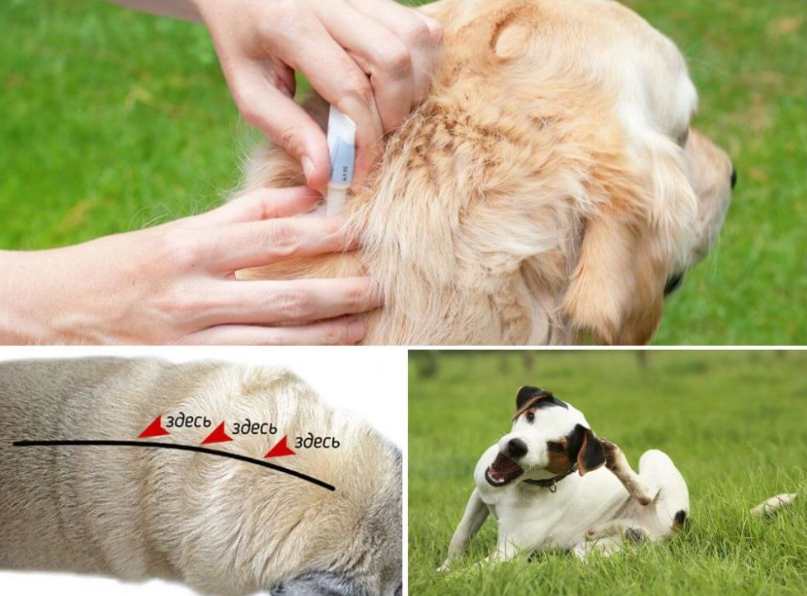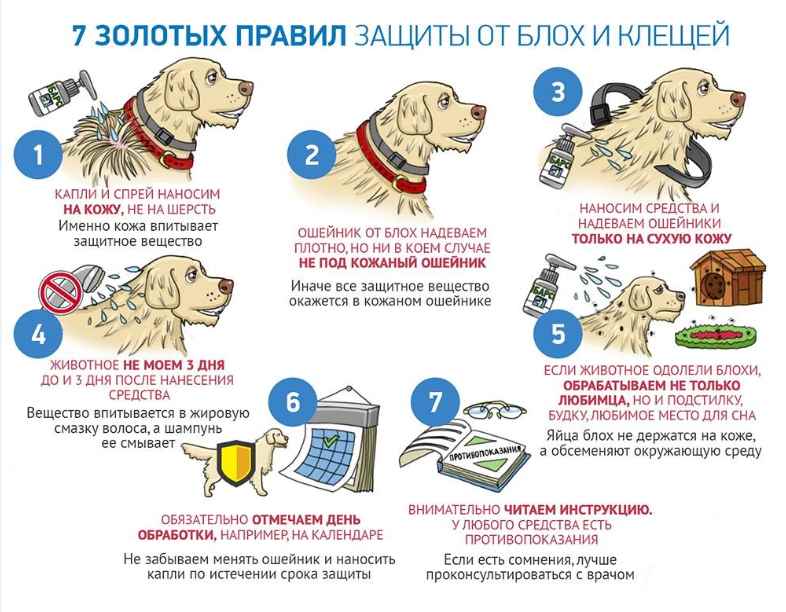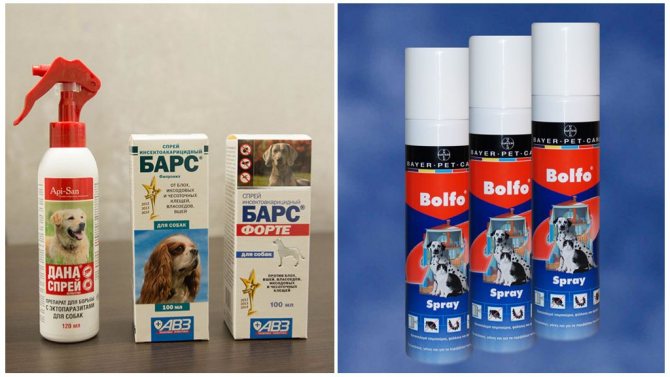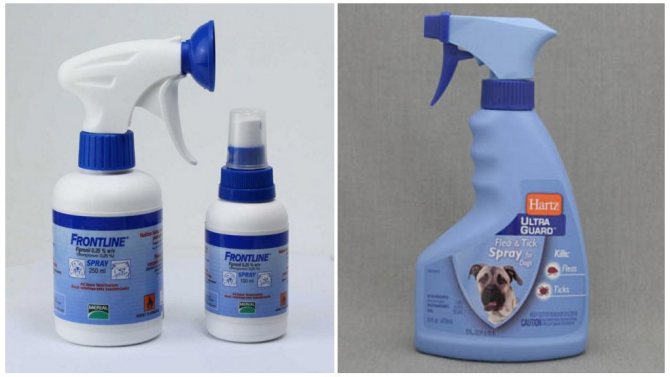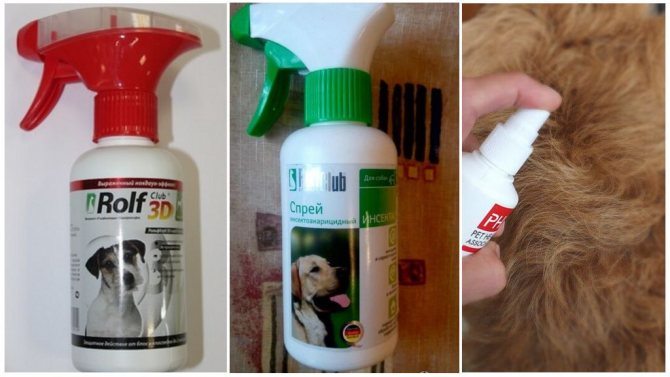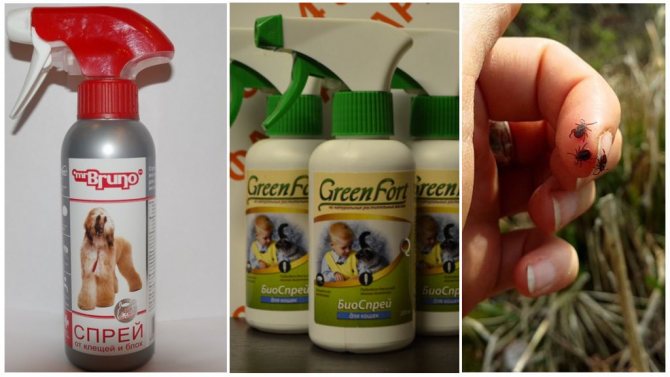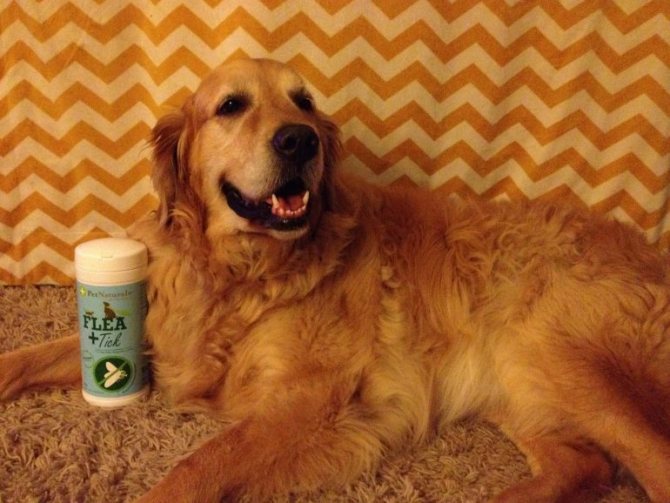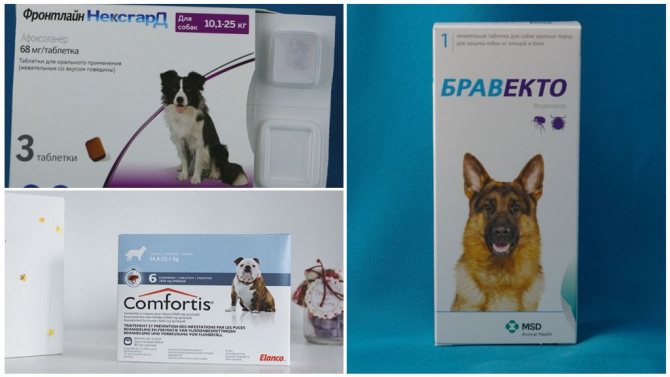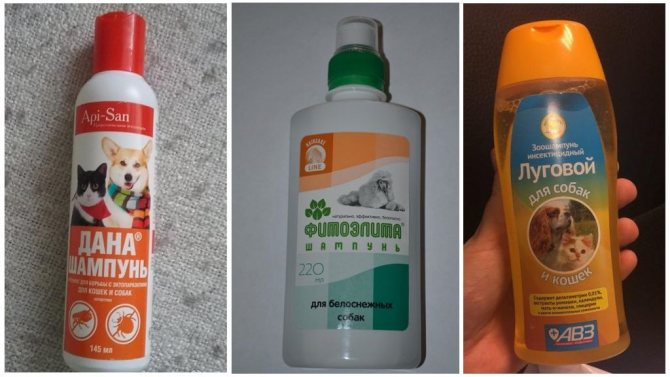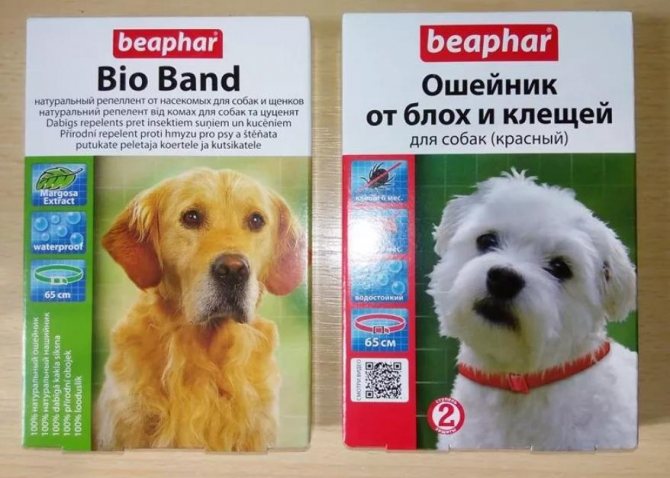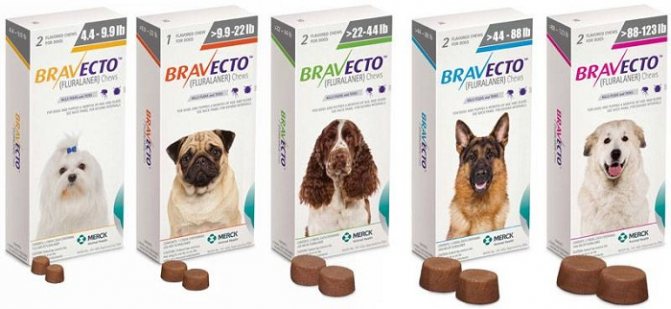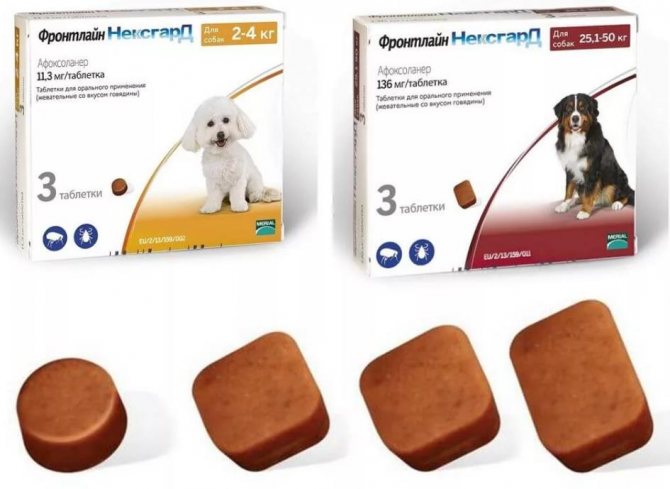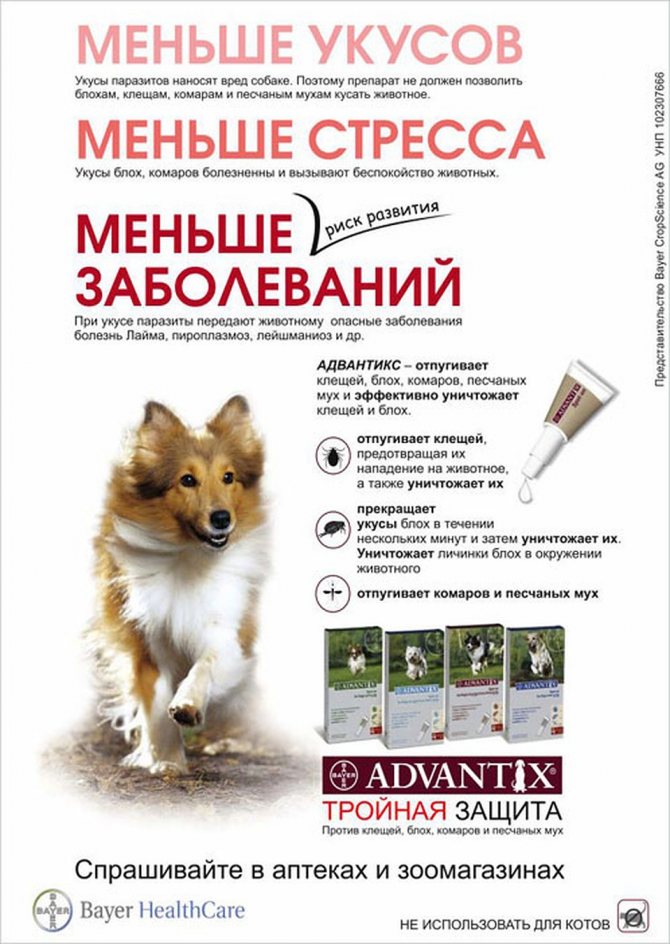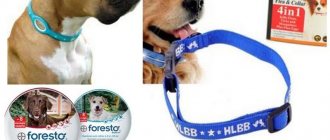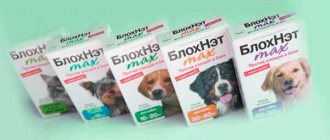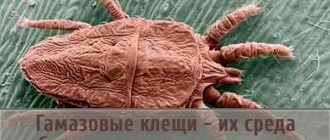Spring did not really have time to come, and ticks have already become active in many regions of the country. Now, dog owners need to be more careful when walking, as ticks don't mind clinging to your pet as soon as possible. These unpleasant arachnids are carriers of diseases that are very dangerous for dogs, such as: piroplasmosis (babesiosis), ehrlichiosis, borreliosis, anaplasmosis. The consequences of these diseases can be the most dire. Therefore, as soon as the first thawed patches appeared on the ground, and it became noticeably warmer on the street, it is worth stocking up on means of protection against ticks.
There are several ways to protect your pet from dangerous "bloodsuckers". Before using each, you must read the instructions.
Collars
One of the most popular ways to protect yourself from ticks. Collars are impregnated with special substances that impregnate the dog's coat and skin, repelling pests. Collars can be of very high quality and effective, or they can be absolute dummies, from which there will be no benefit, so it is worth reading reviews before purchasing. If you bought this particular protective product, then do not forget that it needs to be adjusted in size, otherwise the dog may chew on it, which will lead to poisoning. Often collars protect only the head, chest and neck of the pet, while the rest of the body remains open to tick bites, so many experts recommend using them in combination with other means - drops or sprays. It is best to change the collar before its expiration date, especially if your dog is often in the water.

Why ticks are dangerous: diseases they carry
Ticks do more than just annoy the animal. These are potential carriers of dangerous diseases:
- viral encephalitis, in which there is a violation of the functions of the central nervous system;
- borreliosis (Lyme disease) with damage to the nervous and cardiovascular systems, as well as the skin and the musculoskeletal system;
- blood parasitic infection - piroplasmosis, with damage to blood cells (erythrocytes).
Attention! In specialized veterinary pharmacies and stores, drops, shampoos, sprays, collars, and tick pills are sold. But, for example, in the spring, a single application to the withers of even high-quality drops from a reputable manufacturer is completely insufficient. In order to completely protect your pet, treatment should be carried out regularly and at regular intervals. The time frames depend on many factors. You should also consider the pros and cons of each protection method. Therefore, the best solution is to contact a veterinary clinic for an individual consultation.
Sprays
This method of protection is great for small breeds of dogs, since it is necessary to spray the animal's coat along the entire length, and with a large dog this procedure will be very time-consuming and energy-consuming. It is important to ensure that your pet does not lick itself. It is also necessary that the dog does not bathe after treatment, otherwise the spray will quickly end. It is better to spray the animal outdoors so as not to inhale the unpleasant odor.
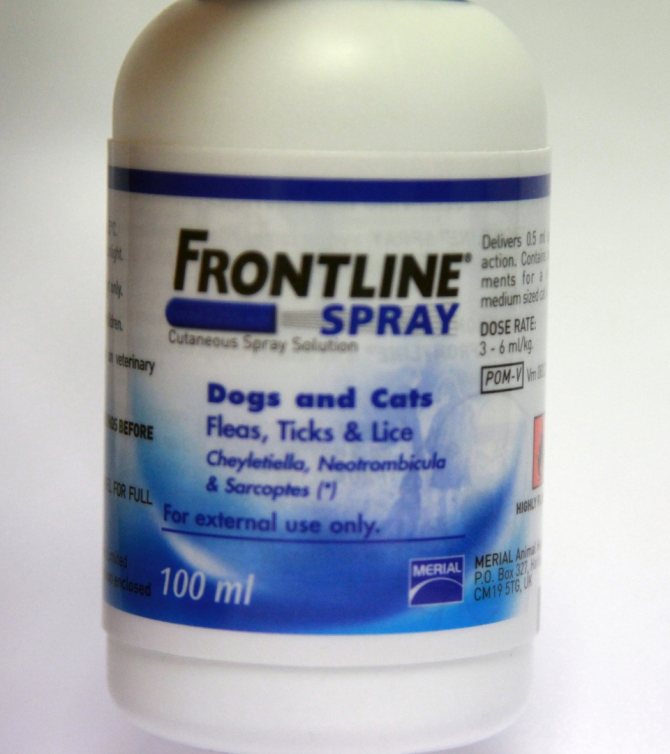

How to get rid of a tick from a dog?
If an ixodid tick is found on the dog's skin, you can try to remove it yourself. But it's important to do it right:
- wear medical gloves;
- grab the tick's body with tweezers (as close to the head as possible), a thread or a special device and start twisting it (clockwise or counterclockwise);
- twist it smoothly, without making any sudden movements, so that there are no fragments of the parasite's head left in the dog's skin;
- make sure the parasite is completely removed;
- treat the wound on the dog's skin with an antiseptic (brilliant green, hydrogen peroxide, etc.).
For several days after removing the tick, it is necessary to monitor the condition of the dog and the wound. If the pet's behavior changes, signs of inflammation appear around the wound, or you are not sure that you have removed the tick completely, you should contact your veterinarian.


Pills
They appeared on the market of protective equipment only a few years ago. They provide reliable protection, are easy to use, many are allowed for pregnant and lactating dogs, as well as small puppies from two months of age. Having given a pill, you do not need to worry about the pet licking the fur and getting poisoned, but dogs prone to allergies should be given this remedy with caution. The drug acts only on ticks that have already been bitten by the animal. It paralyzes the pest and prevents it from drinking blood. The biggest disadvantage of protective tablets is their high price, which turns off many dog owners.
Types of funds
Humanity has been fighting parasites for a long time and stubbornly, and today there are a lot of remedies for ticks for dogs. There are pills, drops, collars, sprays. In the price category, the spread is also great. But I do not want to save, but to find the best remedy for ticks for dogs and to protect the pet and yourself. Dogs can carry a dozen ticks even after one walk. Painfully they like them.
You can protect a dog using modern methods or folk, but remember that no remedy gives 100% guarantees. Many people combine several different products. But there is danger here. Better consult your veterinarian.
Do not use products that are different, but based on the same substance. So an overdose may occur. Don't use all the remedies at once. It is better that some time has passed between processing. Try to keep track of processing dates. Each remedy has its own validity period, but experienced dog owners know that you can safely subtract 5-7 days from a monthly period, because the action is already running out and the ticks begin to cling. Even one missed day can be decisive. Make it a habit to process on the same date or mark on your calendar.
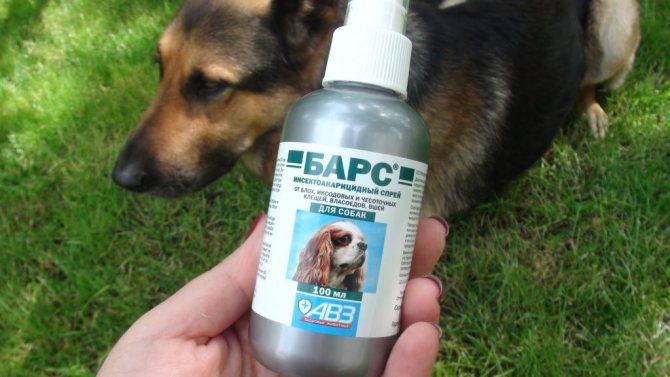

Repellents and poisons act in completely different ways. Repellents scare off parasites, but do not kill them. On the contrary, poisons kill parasites, but do not scare away. And they do not do it instantly. The tick can catch on the dog and crawl over it, slowly contacting with the poison. But still he can have time to bite. Therefore, after a walk, it is important to INSPECT the DOG and comb it. After every walk. Do not be lazy, at least what you have processed it, a simple inspection is the surest remedy. This way you will find the reptile quickly and be able to take prompt action.
What types of tick remedies for dogs are: drops, shampoos, collars, vaccinations, pills, sprays. They all work in different ways. Some lasts six months, while others last 12 hours. They also differ in toxicity; contact with mucous membranes and contacts with other animals in the first 24 hours should not be allowed.
Toxicity is generally a separate issue. Despite the fact that manufacturers claim that the product is absolutely safe, it is still chemistry. Do not take cheap analogs, only a proven and well-known product. Even if you overpay a certain percentage for the brand, large companies value their reputation and try to do everything efficiently. In this case, you save along with money on the health of your shaggy friend. But beware of fakes. Buy in trusted locations. Once you've found a dead or live tick on your dog, you can't just throw it away.Be sure to drown in alcohol or burn. Otherwise, it is still dangerous.
Drops from ticks
Drops are applied to the withers. Thus, the animal cannot reach the treated area. But make sure that the drug is not licked by other animals. How do drops work? The drug is applied to the withers and absorbed into the sebaceous glands. The drug accumulates and also comes back. The drops act according to the contact-intestinal principle, which means they do not scare off parasites, but kill them. But the tick is still alive for some time, so it may well have time to bite, and although the poison has a paralyzing effect, it still happens.
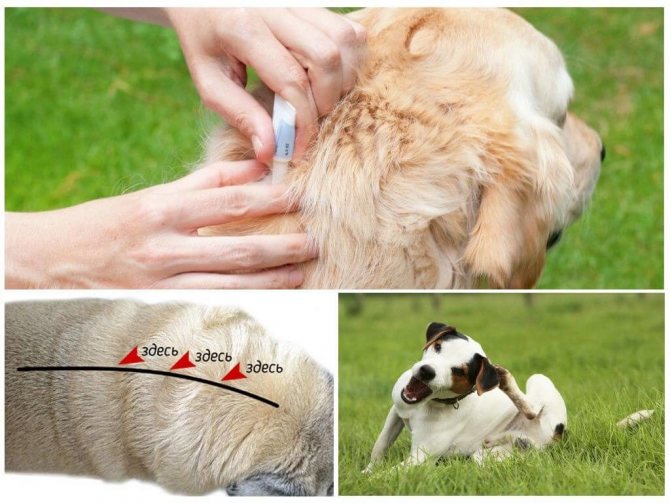

The drops take effect some time after application. Therefore, read carefully and most importantly follow the instructions. Pay attention to contraindications. The dog should not be washed for several days before and after treatment. Wash with shampoos as little as possible. Together with the dirt, you wash off the protective layer and it will take several days to restore it. You can swim in ordinary water, but only if the drug is resistant to water. The dosages are indicated on the package. If this indicator is not there, do not take this remedy. You need to drip on the skin, spread the coat. Don't try to pour as much into one place as possible. Spread in places where the dog cannot lick them off.
Which drops are better:
There are many drugs for ticks now, but you need to choose one and high-quality one. Pay attention to everything: label, contraindications, dosage, active ingredient.
- Frontline. An effective tool that has been on the market for a long time. AB - fipronil. Sold in pipettes with different dosages for animals of different weights. Can be used to treat puppies over 2 months of age, suitable for pregnant women. Valid for 1 month.
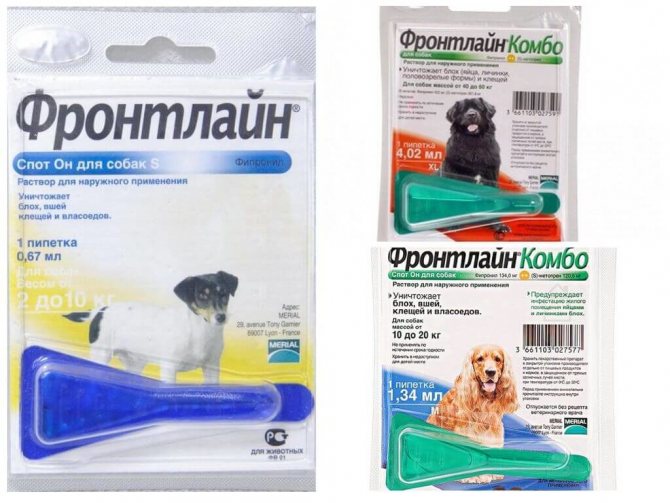

- Practicum. AB - pyriprol. Valid for a month. Suitable for puppies over 2 months old and pregnant dogs. But not used for handling dogs less than 2 kg.
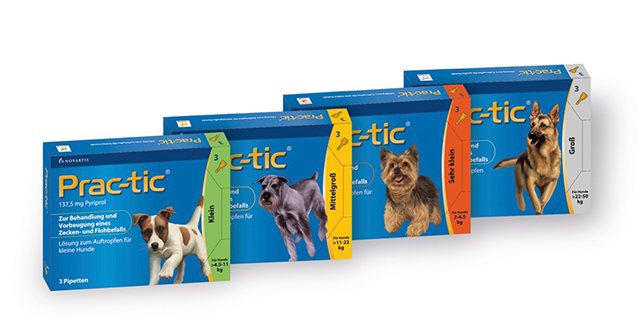

- Advantix. Contains several ABs - permethrin and imidacloprid. Not only kills, but also has a deterrent effect. The parasite dies within 48 hours.
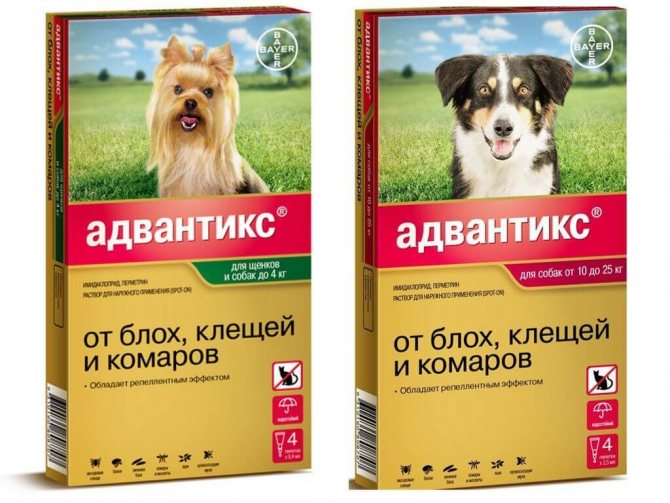

Tick collar for dogs
Collars work just like drops. The substance from the tape enters the skin and spreads throughout the body. But unlike the first ones, they do not penetrate so deeply and therefore the collar must be worn constantly. After putting it on, you need to wait a couple more days until the active substance is distributed throughout the body. Collars last longer. The average term is 6 months. But as in the case of drops, it must be changed before the specified date by the manufacturer. The collar should be in contact with the skin, but do not tighten too tight - two fingers should go. For dogs with fluffy hair, it may be worth choosing another remedy, as the coat will interfere with contact.


Sometimes the collar can cause an allergic reaction. The dog needs to be taken to the veterinarian and consulted about the selection of other means of protection. Collars are of three types: chemical, biological and ultrasonic. The latter are very rarely used: they are expensive and ineffective. Chemical collars kill parasites, but are more toxic. Biological ones are not so dangerous, but only scare away ticks.
- Kiltix... The activation of the substance occurs after a day. It is valid for six months. Not suitable for puppies, pregnant and lactating dogs.
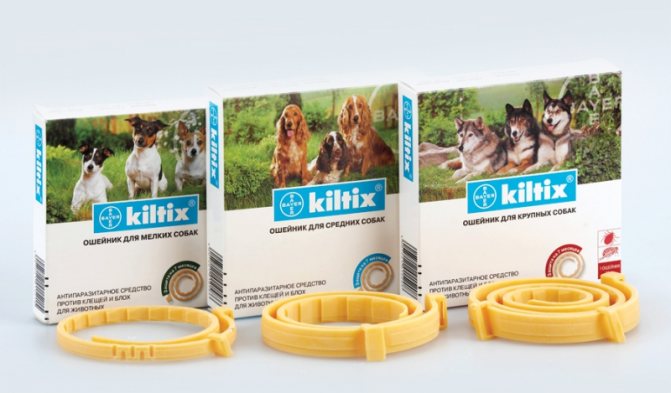

- Scalibor - Suitable for pregnant dogs and puppies of seven months of age. It helps not only against ticks, but also against fleas.
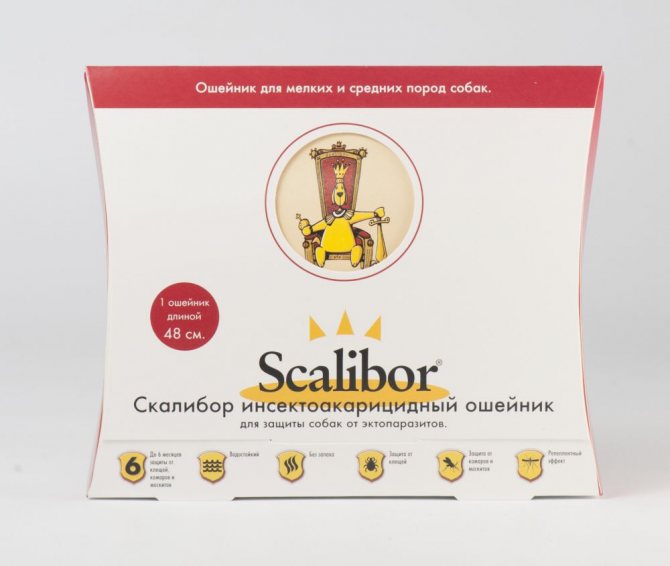

- Hartz. Collar from German manufacturers. Suitable for puppies of all ages and has one of the lowest rates of allergic reaction.
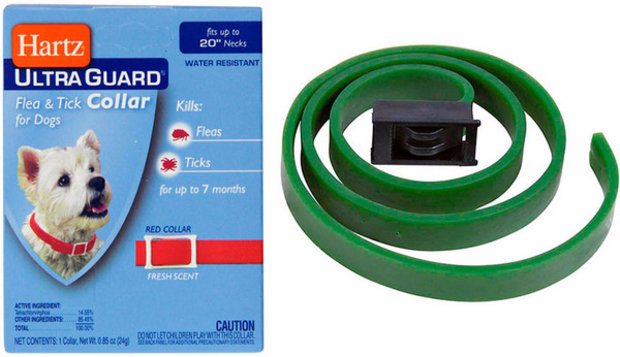

Tick spray for dogs
Sprays are instantly activated, but they do not last so long. It is very difficult to spray, easy to get on the mucous membranes.Treat your dog only outdoors and do not let it groom. The dosage is rarely indicated on sprays, so choose those companies that have this indicator. Also, do not buy products where the active substance is not indicated. But nevertheless, sprays are best combined with other types of protection. Usually it is used by those who are rarely in nature. Or they are used as an additional measure of protection, for example, for paws that are constantly washed.
- Bolfo. Sprayed against coat growth. Not for use on dogs less than 6 months old. The spray should be sprayed at a distance of 30 cm.
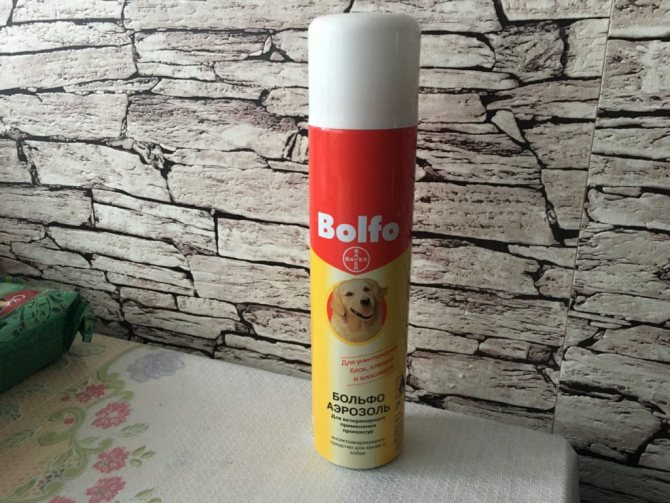

- Leopard. Spray from a Russian manufacturer. One of the cheapest, but still effective. Not highly toxic.
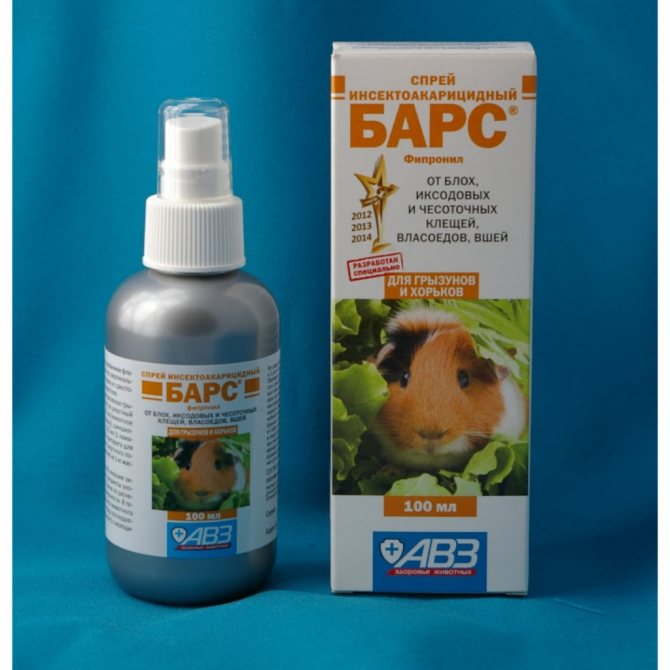

- Frontline. Suitable for dogs of all ages and pregnant animals, but toxic to humans.
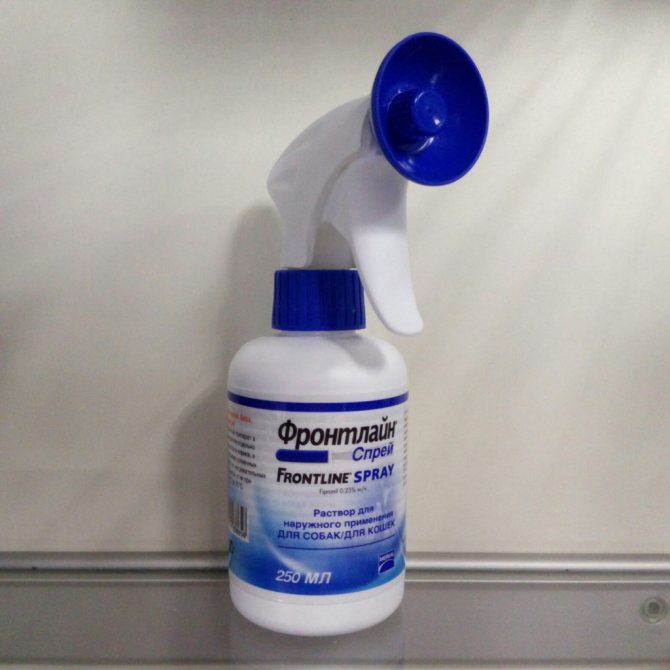

Tick tablets for dogs
Pills have become popular not so long ago. They have a number of advantages: they are not toxic, they can be given to lactating and pregnant dogs, puppies. You do not need to constantly use them like other means. Convenience and safety for humans.
- Frontline. AB - afoxolaner. Non-toxic, the dog can be washed. Acts quickly. The dosage depends on the weight of the dog.
- Comfortis. AB - spinosad. Can be given to puppies from 4 months old.
Tick vaccination for dogs
Vaccination is a more radical remedy. However, it still does not give 100% guarantees. The vaccine contains the virus, but weakened. Thus, antibodies begin to be produced in the dog's body. There are two aspects of vaccination that negate the benefits.
The tick bites anyway. And the animal gets sick with paroplasmosis. It just tolerates it more easily and a longer incubation period. But the animal gets infected anyway! Another disadvantage is that the symptoms are weaker. There are no pronounced symptoms due to the weak course of the disease. And later conversion is fraught with consequences.
Folk remedies for ticks for dogs
Previously, there were no vaccines, pills or collars. However, caring owners still managed to help their pets. Folk remedies do not contain chemicals and are safer, suitable for all dogs. But their age is short, literally 2-3 hours and must be applied again. They act as a repeller, so the tick can still bite the dog.


What scares away ticks? Wormwood decoction, vanilla tincture, tar water, garlic tincture, almond essential oil with geranium essential oil. The products are applied with a spray bottle or rubbed into the wool. In the case of garlic, apply the product only to areas that the dog cannot reach.
Vaccine
Vaccination does not scare off parasites, but it helps the animal develop immunity from severe diseases carried by ticks. It is necessary to put it only after consulting a veterinarian, especially if your dog has already suffered from borreliosis. Unfortunately, now it's too late to vaccinate, since ticks can already bite your pet, and immunity is formed three weeks after the re-vaccination. That is, in order for the vaccine to start protecting the dog in March, the first injection should have been given in January, then the second in February, provided that you vaccinate the animal against ticks for the first time.
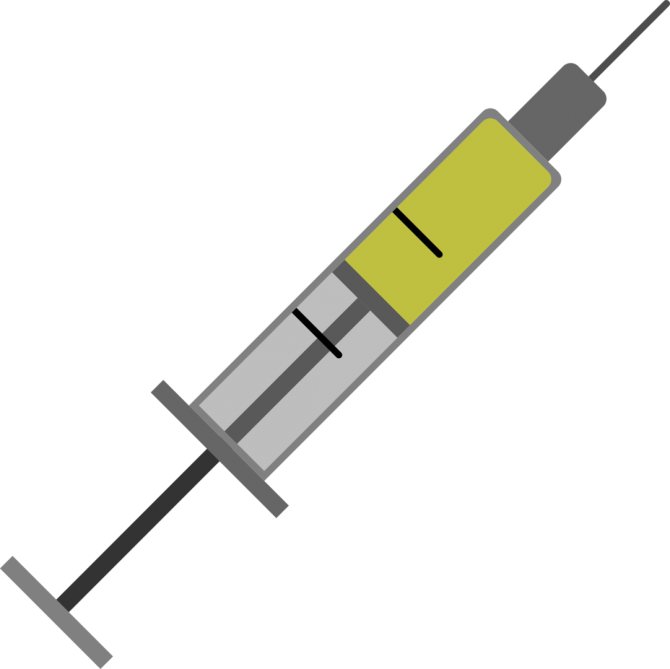

Babesiosis does not occur immediately at the time of the bite ...
... as they write in some articles on the Internet, but only on the second day, when the female drinks blood and squeezes back the liquid (unnecessary for her) part of the blood, then babesia from the salivary glands of the tick under pressure (like a syringe) enter the dog's blood. Therefore, it is unlikely that a freshly attached tick with an unfulfilled abdomen will cause disease, although it is not 100% excluded. The work of most protective drugs is based on this - a tick can attack a dog and bite it, but it turns out to be paralyzed by an active substance and does not infect the animal.
Special clothing
Another good way to protect yourself, but only if your dog is comfortable wearing the clothes. A special jumpsuit with elastic bands on the paws prevents ticks from getting on the animal's hair. If the suit is light in color, then you can see all the parasites that have crawled on it, and you can easily get rid of them. It is better to use such protection in early spring, while it is not too hot outside.
Even if you are using multiple protections for your pet, be sure to check it after your walk. There is always a chance that the tick was still able to overcome all barriers and ended up on the dog's coat, with which after a while it can crawl onto you, especially if it has not yet had time to bite the pet.
Powders and shampoos
You can prevent the danger with the help of a special powder. For the most part, these funds are not intended for preventive treatment, but in order to combat existing insects. The active component of powder preparations is pyrethroid. To ensure the proper effect, the product is applied to the coat and rubbed into it. It is necessary to distribute the powder carefully, excluding the possibility of getting the drug on the mucous membrane of the eyes. Many dog owners use special shampoos. The composition of this tool:
- qualitatively cleans wool, skin from impurities;
- distributes toxic components;
- provides nutrition to cells.
Active substances are absorbed into the hairs, dermis, repel insects, destroy adults and larvae. You can use shampoos for prevention, getting rid of parasites. The advantage of these products is a gentle effect, the ability to use them for puppies, pregnant women, lactating bitches. Shampoos are very popular: Bars, Dana, Fitoelita.






